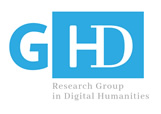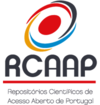The use of digitized books in online classes: Limits and possibilities
DOI:
https://doi.org/10.21814/h2d.3534Keywords:
children's literature, technology, digitized, e-book, public school, childrenAbstract
History shows that literature has been, over time, appropriating existing technologies to continue, increasingly, accessible to the reader. Literature has a wide variety of children's books in e-book format available on the internet, so we saw the opportunity to use them in the school environment. Even though technologies are reinventing the literature book, the purpose of this book remains the same: to entertain and transmit knowledge. In this article, we will briefly address the evolution of the book in light of existing technologies and how the literature has been renewed to meet the needs of users. Afterwards, we will make a brief survey on the official documents of Brazilian education that deal with children's literature and new digital technologies in schools. Concluding, thus, with an account of the reading project: "Traveling in literature through the web", which was adapted for times of social distance, about digitized children's books with children aged 6 and 7 from a public school in online classes, in an attempt to promote interest in children's literature.
Downloads
References
Coelho, N. N. (2000). Literatura infantil: teoria, análise e didática (1.ª ed). Moderna.
Araruna, W., Pinheiro, A., & Carneiro, G. (2013). A influência dos livros digitais no acesso a informação: Uma comparação entre o livro digital e o impresso. Múltiplos Olhares em Ciência da Informação, 3(2). http://hdl.handle.net/20.500.11959/brapci/69639
Araújo, M. (2019). A leitura, por crianças pequenas, de obras de literatura digital e digitalizada. Leitura: Teoria & Prática, 37(75), 81-99. https://doi.org/10.34112/2317-0972a2019v37n75p81-99
Brasil (2018). Base Nacional Comum Curricular. Ministério da Educação. http://basenacionalcomum.mec.gov.br/
Brasil (2015). Plano Nacional de Educação PNE 2014-2024. Instituto Nacional de Estudos e Pesquisas Educacionais Anísio Teixeira. http://portal.inep.gov.br/documents/186968/485745/Plano+Nacional+de+Educa%C3%A7%C3%A3o+PNE+2014-2024++Linha+de+Base/c2dd0faa-7227-40ee-a520-12c6fc77700f?version=1.1
Brasil (2013). Diretrizes Curriculares Nacionais Gerais da Educação Básica. Ministério da Educação, Secretaria de Educação Básica, Secretaria de Educação Continuada, Alfabetização, Diversidade e Inclusão, Conselho Nacional da Educação. http://portal.mec.gov.br/docman/julho-2013-pdf/13677-diretrizes-educacao-basica-2013-pdf/file
Flatschart, F. (2014). Livro Digital Etc. Brasport.
Reis, J., & Rozados, H. (2016). O Livro Digital: Histórico, definições, vantagens e desvantagens. Seminário Nacional de Bibliotecas Universitárias. Manaus. http://hdl.handle.net/10183/151235
Soares, M. (2020). Alfaletrar: Toda criança pode aprender a ler e a escrever (1.ª ed.). Editora Contexto.
Downloads
Published
How to Cite
Issue
Section
License
Copyright (c) 2022 Karla D'angela de Lima

This work is licensed under a Creative Commons Attribution 4.0 International License.






